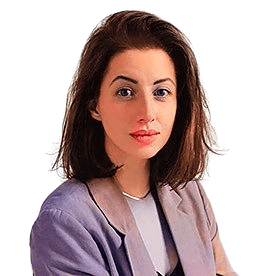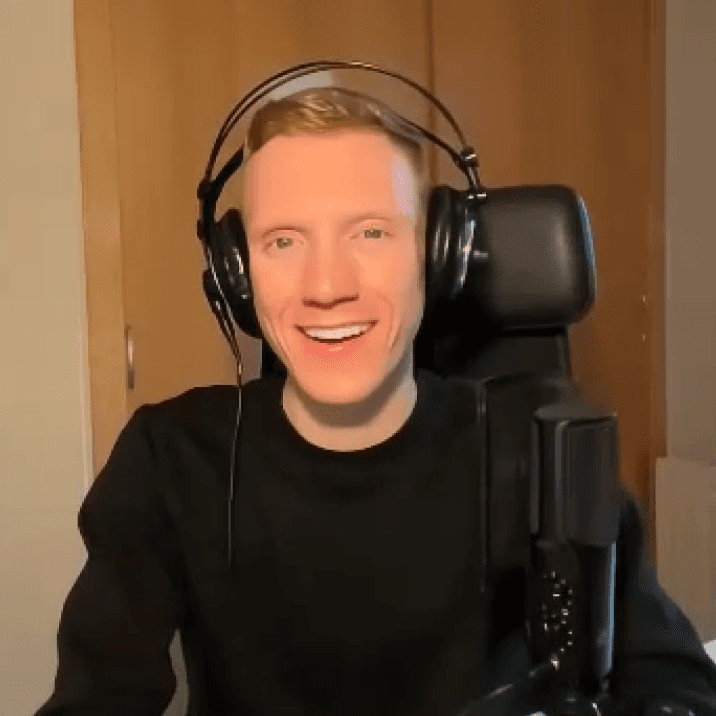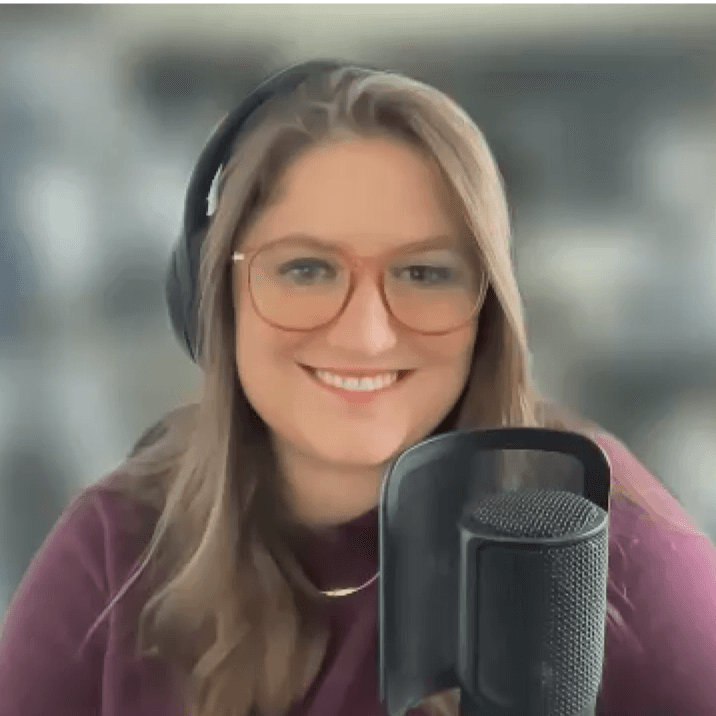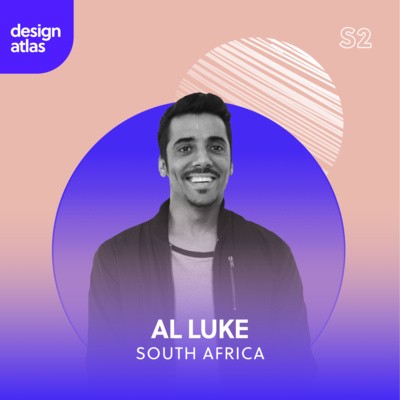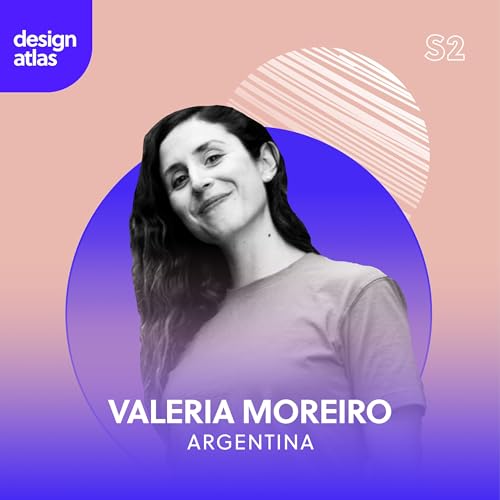Episode #
Minutes
Dorota Lichtańska: Managing Design and Animation Projects at Studio Pigeon
June 3, 2021
Episode Show Notes
We head over to Krakow, Poland, and meet up with Dorota Lichtanska, a creative producer at Studio Pigeon, an animation studio that produces various short and long animation stories and content for a variety of local and international clients. Dorota’s story is inspirational, as she enjoys both artistic pursuits in her free time, as well as organising and planning creative projects during her working hours. She likes traveling A LOT. Her favourite destination? Japan. And we’ll hear from her directly about her adventures there as well.
Episode Transcript
Jens Bringsjord
You're listening to Design Atlas Season two.
Megan Luedke
Many designers don't see the full picture before a new project begins on the creative side of things. Depending on the company and the size of the project, these details usually require pre-planning and organising. Haven't you ever wondered what it looks like to be on the managing side of a creative project?
Jens Bringsjord
In today's episode, we'll head over to Krakow, Poland and meet up with Dorota Nikitin Scott, a creative producer at Studio Pigeon, an animation studio that produces various short and long animation stories and content for a variety of local and international clients. The story is truly unique, and she enjoys both artistic pursuits in her free time, as well as organising and planning creative projects during her working hours.
Jens Bringsjord
She likes to travel a lot. Her favourite destination, Japan, and we'll hear from her directly about her adventures there later in the episode. To buckle up, grab your design atlas and let's head over to Krakow, Poland, to meet up with Dorota NYTimes.com.
Dorota Lichtańska
Rethink your creativity. That's why it's so important to change the perspective. Hi, my name is Dragon's Gaizka. I'm a creative producer at The Pigeon in Krakow, Poland. It's good to be done. We create commercial and artistic animation, mostly in 3D technique. In my free time, I like to create everyday objects I like. I enjoy visiting art museums, taking pictures and hiking mountains.
Dorota Lichtańska
So basically, I'm not designing anything myself. I don't know how to draw or animate. My job is to find the key aspects of the project, like initial idea and artistic direction. I'm also using Maori in my experience that comes from working as a project manager, so organising stuff. Basically, I'm working with others. Other talented people are directors, scriptwriters, illustrators, animators, and they help me to materialise and develop ideas.
Dorota Lichtańska
This is the fundamental difference in my case. But for every company, I guess it means something different because each character is different. And I guess there is no prescriptive way of being a creative producer.
Megan Luedke
While Dorota manages creative projects at Studio Pigeon today, she actually has a bit more of an artistic and creative side herself. But her strongest skill is organising and planning projects. We asked her how she ended up in the creative producer role.
Dorota Lichtańska
Becoming project manager or creative producer wasn't my dream when I was a child. It also just naturally evolved from one to another after a couple years of collaboration. My boss offered me the position of creative producer and it came naturally to me because I was always interested in art and film. I also like managing creative processes, something very important.
Dorota Lichtańska
That's also why I wanted to work in company as well, such as for your pigeon and.
Jens Bringsjord
After she graduated high school, she began her studies at a film school in Woods, Poland. Here's her story on her evolving career and how it opened the door to lead her to where she is today.
Dorota Lichtańska
Obvious to me that I would work in the animation industry when I was younger. I enjoyed drawing manga characters, but there is no straight imitation between this and what I'm doing now. Yeah, I was living in Tiny Village then. When I was 18 I moved to Warsaw and I graduated from film production department to film school. I started to look for a job in the film production industry.
Dorota Lichtańska
After a couple of months, it appeared that it's not so easy to get this kind of job. And so I started thinking about some other market sectors in which I could possibly use my skills. And then my friend told me about a company in Krakow, which produces multimedia exhibitions for museums. It seemed very interesting to me because it was mixing art and technology.
Dorota Lichtańska
Also, I really like planning and creating budgets and timelines. It's actually a very relaxing thing to read. So I thought, okay, it's like perfect depth for me. They hired me and it was my first job as project manager, and then after a year I started to feel that maybe I should change something. And this is how I found the position.
Dorota Lichtańska
I thought this was a good place for me because of the interesting projects and the general vibe of the company at the time. They had to open the recruitment for the position of project manager, but I decided to apply anyway. After a few weeks they called me back and invited me for a meeting. Yeah, I had to go through the complicated recruitment process, but they were positive.
Dorota Lichtańska
And this is how my adventure with animation started moving.
Megan Luedke
Having worked at Studio Pigeon for the past five years, she's had quite some experience in improving her skills when it comes to managing a creative project.
Dorota Lichtańska
My typical day, I would say it depends on the face of the project. The one thing that is constant, especially nowadays, is meeting with my team in the morning because we just need to stay integrated. So while working remotely at the beginning of the project, I usually spend most of my time on analysing the brave, doing the research.
Dorota Lichtańska
Then I'm starting to work with other people. Now I work with an art director. We are developing the ideas for storytelling, for a visual direction. We are working with scriptwriters, illustrators, so they create background tests, character tests and so on. So, pigeon works on various types of projects, but they are mostly in 2D technique. Sometimes they have little elements of 3D, but it depends.
Dorota Lichtańska
We are choosing the technique for the project. For the first four years, I was working in commercial departments, which usually produced shorter animations like commercial ones, advertising's explainers and so on. Now I'm in the department, which focuses more on longer formats, usually cartoons, artistic and feature animations.
Jens Bringsjord
Storytelling is one of the most challenging yet rewarding skills to develop. Usually this requires doing a ton of research before building a story, determining the characters and making sure the storyline will resonate with its viewers.
Dorota Lichtańska
Currently, I work on an anthology of animations about a picture simultaneously. I also did The Love Cartoon series and preschoolers from the Middle East. When you work for a client from different regions of the world, you have to take into account an entirely different perspective. Most of the cartoons are set in the Western context. That's why we want to set our cartoons in a local context.
Dorota Lichtańska
So it's familiar to the children from this region of the world. We are doing the research and learning about the local culture to make sure that the characters, the personality, and the background of the story will be familiar to them in the development process. We also work on the style of the animation and character design. We create illustrations to choose the drawing line type and the colour palette.
Dorota Lichtańska
We need to make sure that the character design is the reflection of its personality. The purpose of that is to create artistic direction before we move forward to the production phase.
Jens Bringsjord
The daughter has always been interested in travel and learning from and exploring new cultures. A few years ago, she wanted to learn and see what it was like working in another animation studio, especially seeing different projects created through a different cultural context. She had her eyes set on Japan. She did her research and found a Polish animation studio called Juice that invited her to see how they work.
Jens Bringsjord
So obviously she went to Tokyo to explore and learn.
Dorota Lichtańska
I really wanted to go to Japan for so many years, so I decided to go there just to travel for a few weeks. But then it came to me like, maybe I will have an internship. Why not? I started to think about it. I started to contact Japanese animation companies, but it appeared that they could also be Italians.
Dorota Lichtańska
Because I don't speak Japanese. But then I realised that there is a Polish company which has a studio in Tokyo. One of the offices they have office in also wrote Suave and in Tokyo. I just wrote an email and I said, okay, I would like to join you for a couple of weeks. And they say, okay, just go. Come to Japan.
Dorota Lichtańska
The company is mostly focusing on post-production, visual effects and 3D animation. So it was something entirely new to me and was also somehow interesting to see the Polish company on the Japanese market. They showed me the basics of the productions because technically it's really complicated. So just a few weeks it's not enough to learn enough.
Dorota Lichtańska
But still, I have some basic, like, idea what it means to work in such a company. And it was just that I just love Japanese animation, especially Studio Ghibli. So I just really wanted to learn something more about it. So that was the initial reason for such a crazy idea.
Megan Luedke
Toronto thought the language barrier would make it difficult to find an internship in Japan. However, having had the opportunity to shadow and work at the Polish run studio in Tokyo, Throat then noticed that it wasn't just the Japanese language around her that made the work feel more international.
Dorota Lichtańska
The Tokyo office was like a true Tower of Babel. People spoke in Polish, Japanese, German, and English. Sometimes they were forgetting to switch between one language to another. It was quite funny. The variety was huge, but the communication was going great. Part of this because language is just a tool for that. You don't have to speak perfectly to communicate well.
Megan Luedke
Outside of her internship, she also took some time to travel around Japan to get a better understanding of local Japanese culture by exploring different areas.
Dorota Lichtańska
So when I got to Japan, it was like landing on Mars, probably because I was waiting for it for so long that I somehow had this idea of the country and then there was a reality. But it took a while. I planned this trip entirely by myself. Of course, there was a lot of planning because let's say I'm a project manager, so I'm not going anywhere without planning.
Dorota Lichtańska
I was reading a lot of books, articles, watching YouTube videos and so on to prepare to learn about the country. At the beginning, it was a little bit scary because I had no idea how I would go from Tokyo to Hiroshima or now Shima. Sometimes I was also getting lost, but it was pleasurable, like I was discovering something new each time.
Dorota Lichtańska
When it happens, Japanese people are also really helpful. As they say, this trip was just amazing. I felt safe. I felt Tokyo's kind of cosy despite the huge population of the city. So it's a beautiful place to be. So it was easy for me. I was just riding through the city, like taking care of the streets.
Dorota Lichtańska
Like the differences between them. Because each different district has an entirely different vibe. One is more business, the other one's like full of shrines and very cosy.
Jens Bringsjord
The island of Now Shima was one of the author's favourite places during her visit to Japan.
Dorota Lichtańska
There was an island now called Shima, which is a small island full of modern art museums and they are somehow feudal.
Dorota Lichtańska
They are adapted to the landscape. So it's very organic, like super beautiful. You rent a bike and you ride it. Between the museums there is the seaside and it's just amazing. Full of artistic installations, full of museums, amazing.
Jens Bringsjord
We all know the importance of having a hobby outside of our work lives. Whether that's a creative pursuit sport or other type of activity, it's important to exercise the brain in different ways. As we mentioned earlier in the episode, the daughter really enjoys making pottery in her free time. This is how the daughter got into pottery.
Dorota Lichtańska
I think we had some integration, like a trip with a company. There was a pottery class for those who wanted it. So I attended and it was so relaxing. I fell in love with it. The satisfaction that comes from creating a physical object was huge. So after, I don't know, maybe a year or two, I thought, maybe I will do it again.
Dorota Lichtańska
And this is how it started. Like I started to attend some kind of workshops. I bought a huge bag of clay and I started to do it on my kitchen table. The link between hobbies, like creative hobbies and animation is sometimes not so obvious. But you are a you know, you are learning, you are travelling, reading, listening to the podcast, doing a lot of things, and then you just unconsciously use it while working.
Dorota Lichtańska
So that's why I think it's very important to have this kind of creative passion and do something relaxing after work so you can then use it. I'm usually hand building, but I also was on the workshop and we were working with a porcelain and this is what I would love to do, but it's not so easy in Krakow because the process of creating the pottery out of clay is different than the process of creating pottery out of porcelain.
Dorota Lichtańska
So to me, creating out of clay is just more accessible. I'm trying to do minimalistic light objects. This is what I like. The most. I also like the conceptualization phase. Imagining the future object is fun to me. And for example, while working with porcelain, I designed bowls which would resemble the pornography of the mountains. After creating an object, you have to burn it twice in a really high temperature and you have to glaze it, which is a tricky part because it's very difficult to control the outcome.
Dorota Lichtańska
So making pottery requires a lot of patience.
Dorota Lichtańska
I think we all know people who are dealing with mental health problems these days. The problem is that they sometimes ask for help and now they are not even aware that something is happening to them and they maybe could talk about it. I was depressed after film school because it was a struggle to find a job, figure out what they wanted to do.
Dorota Lichtańska
What are my strengths? The job market knows it can be difficult. Like I was working in so many places since I was 18. I was working in models, agencies, fashion boutiques, a lawyer's office, and an art house. I guess humour. And for years, I was trying to figure out what I wanted to do. There is such a pressure around the career being the best as you can, leaving your comfort zone and so on, so you just have to be successful.
Dorota Lichtańska
There is like the message that comes especially from social media. So I was deeply affected by that when I was younger in politics, education about mental health is not so good, the quality of the education is not so good. So I think it's just an important matter and we should normalise it, especially these days when we are all sometimes scared.
Dorota Lichtańska
We are dealing with anxiety. We don't know what will happen. We just need to adapt to change so quickly. So many people just need support and I think we should talk about whether it's normal to ask for help or we hope that, ah.
Megan Luedke
This story gave you a different perspective today on how design projects are managed and created before we as designers even begin to start working on them. If there's something we can learn from that or the story is that we as designers should continue to reach for new challenges and never give up.
Dorota Lichtańska
When I was going to Japan, I openly said that I needed those two months off and the company allowed me to go because I needed that. I needed to evolve, I needed to move. I needed to learn new things to do something. Maybe even crazy.
Jens Bringsjord
And while the unexpected might happen throughout life, it's the way in which we react to the challenges or surprises that makes all the difference. Just like the American poet Maya Angelou said, if you can't change it, change your attitude. That author's journey is an inspiration to us all. Never give up and continue to excel no matter what comes your way.
Dorota Lichtańska
This is the Design Atlas.
Jens Bringsjord
We hope you join us next Thursday as we travel to Buenos Aires, Argentina, to meet up with Valerie. I'm with Ajo, creative art director and owner of Not Real, an international design and animation studio. Want us to remind you of when the next episode comes out. Simply subscribe to our email updates by Visiting Design Atlas pod dot com.
Megan Luedke
To find out more about the Delicti Ska, we've included her Instagram and website links in the show notes. We definitely recommend you check them out.
Jens Bringsjord
Also, don't forget to join us for our next episode by subscribing to the show and leaving a positive review. We really appreciate it.
Megan Luedke
To learn more about Design Atlas and to sign up for updates, visit our website. If you want to get in touch with us or have a topic idea for our next episode, feel free to send us an email at hello@designatlaspod.com or DM us on Instagram @DesignAtlasPod. Thanks for listening.
Megan Luedke
I'm Megan Luedke.
Jens Bringsjord
And I'm Jens Bringsjord.
